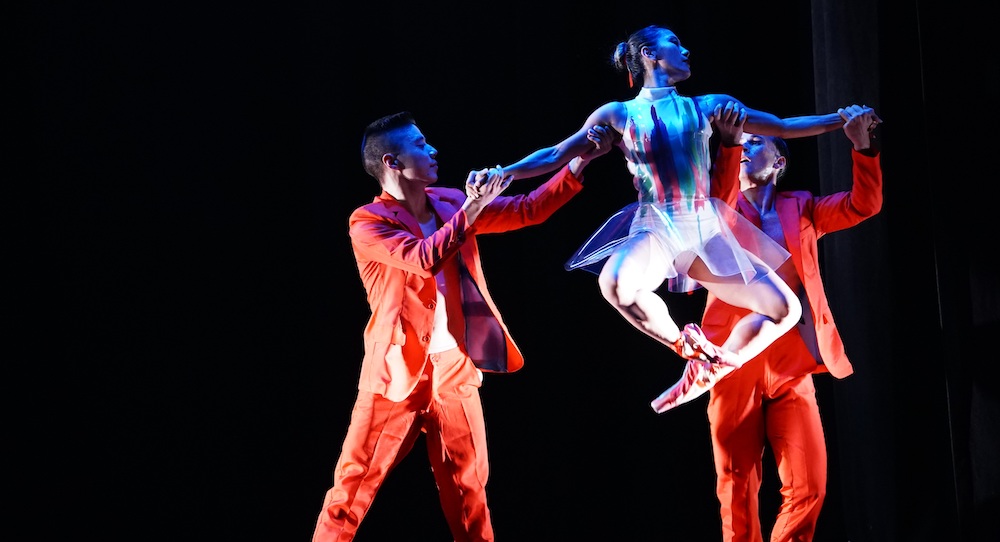Abrons Arts Center, New York, NY.
July 11, 2019.
Sheena Annalise founded Arch Contemporary Ballet “to ensure the continuous evolution of ballet, designed for an inclusive and varied 21st century audience.” It’s interesting to see the varied ways she’s approached working toward that mission — using technology in conjunction with movement, experimenting with universal design principles and generally defying classical ballet norms (such as having musicians on stage with the dancers).
In Chromatic Skies, world premiered in a triple bill at the Abrons Arts Center, she hit upon yet another way to push ballet to evolve — using design elements, in tandem with movement, to comment on an influential aspect of modern life. Bars of light overhead, white and blue and red, lit the dancers. The ballerinas’ dresses (designed by Annalise with Darlene Adams as a costume technician) mimicked the lights — blue and red with a plastic sheen over it. The score (composed by Eric Whitacre) was jumpy and energetic.
Movement was quick and lively to match the score, as well as bold. Memorable lifts included a “stag” leap (one leg bent and the other leg lengthening back) in the air, slowly turning with ballerinas supported on a partner’s shoulder. Ballerinas also lowered toward the ground while balancing on one foot, the other leg extended forward, holding a hand of a partner. Another motif, this one independently performed, was lifting a leg with a bent knee (attitude) to the side — in so doing reinforcing a strong accent in the music.
All this movement material was aesthetically satisfying but also meaningful. I felt growing a meaning or theme of how many (if not most) living humans live under the glow of electronic lights. How does it affect how we are together and in ourselves? How much does technology become a part of us (the dresses stylistically reflecting the lights overhead)?
Supporting the idea of the individual alone and in a group was how the dancers moved in and out of unison and non-unison movement. Alone, they moved in their own way. Together, something compelled them into something much more uniform. Social media and advertising can drive us to want to act like what we see, because there lies happiness, beauty, financial security, romance — so the illusion can go.
That all felt intriguing and successful. I also saw something intriguing that made me want more of it. In one section, two danseurs turned, leapt and landed on two feet. Quickly, almost as if thrashing, they reached arms to their right and tilted their spine to 45 degrees. This segmentation of the upper body seemed capable of speaking to the organized chaos we can feel checking off lists of online tasks. It was also visually and energetically satisfying to see the spine thrown off-center from the strong base of grounded legs. I would have loved to have seen this kinesthetic and visual theme explored more.
A compelling, memorable other instance of throwing the spine off center-of-gravity came in a quieter, slower unison section. The dancers stood facing the back, in a formation with staggered lines (so all were seen), and began to shift side-to-side. Their bodies stayed in a straight line, yet sloping, and their feet stayed planted. They looked up as if searching.
I thought back to the title, and wondered if they were searching for something in the lit sky — lit not by stars, but by artificial light. It seemed similar at the ending of the work, yet the dancers were in their own space and doing their own movement as they looked up. Together or apart, we look up to the electronically chromatic skies. Dance art seems to be a wonderful vehicle for illustrating this truth, and hats off to Annalise and the company for the illustrating.
By Kathryn Boland of Dance Informa.















